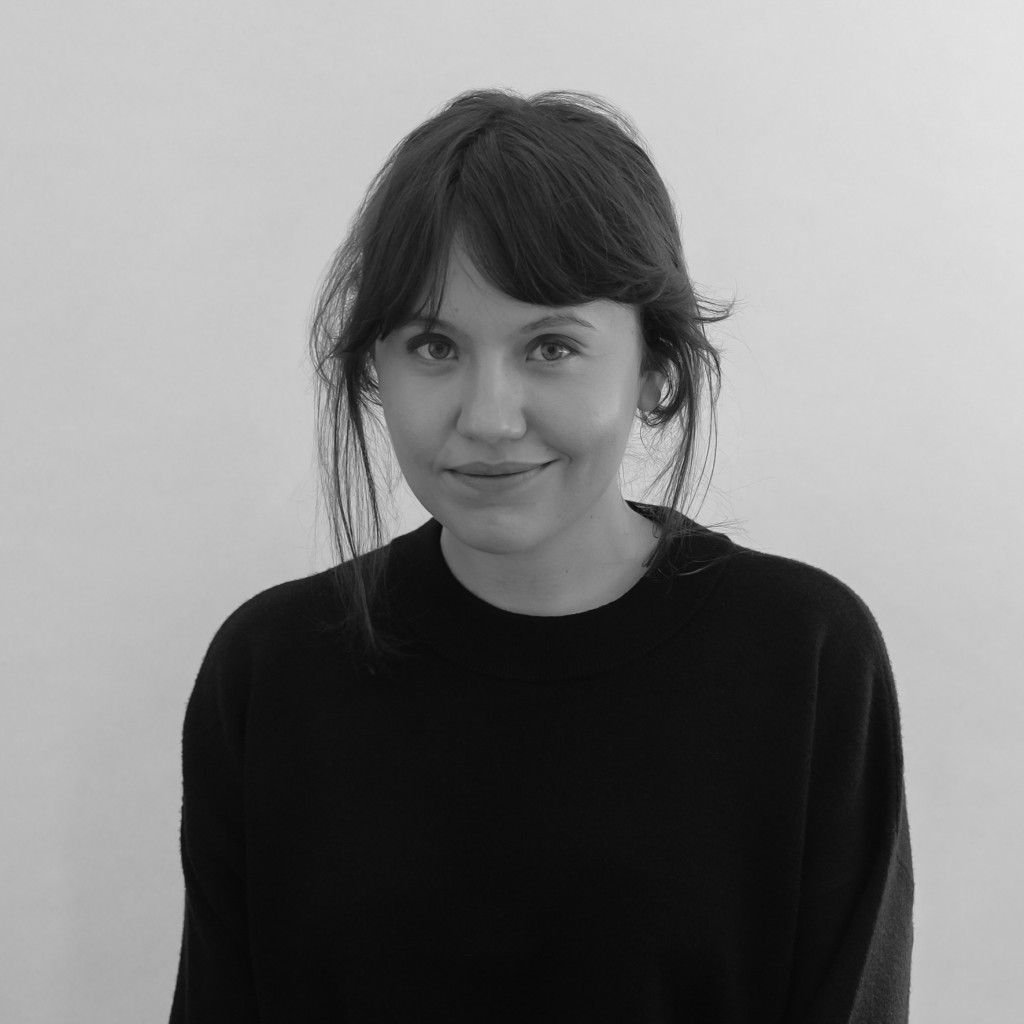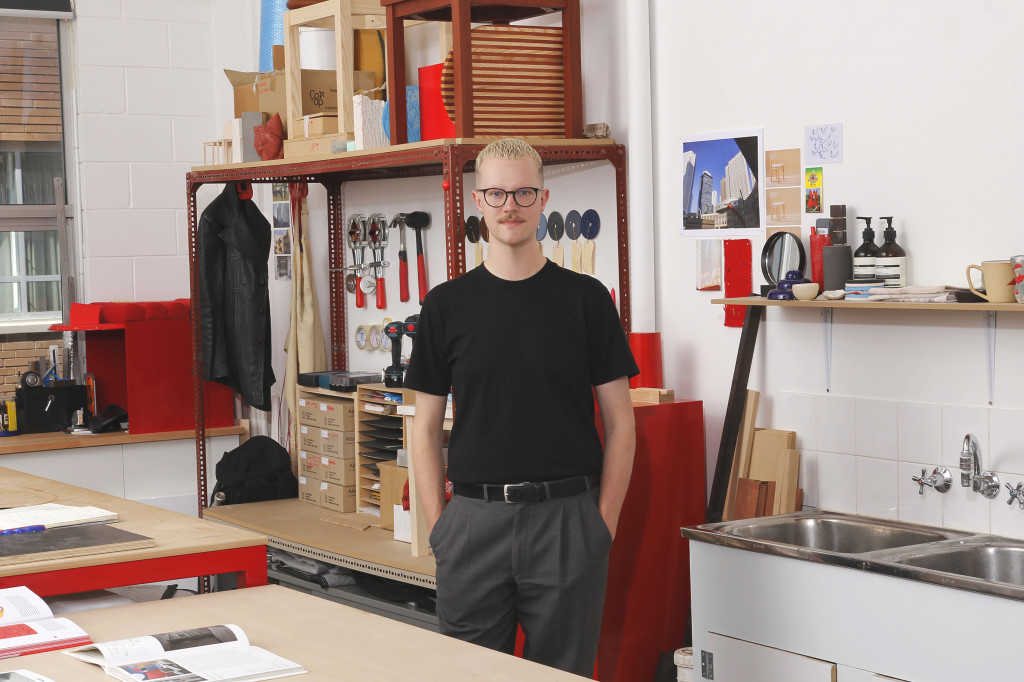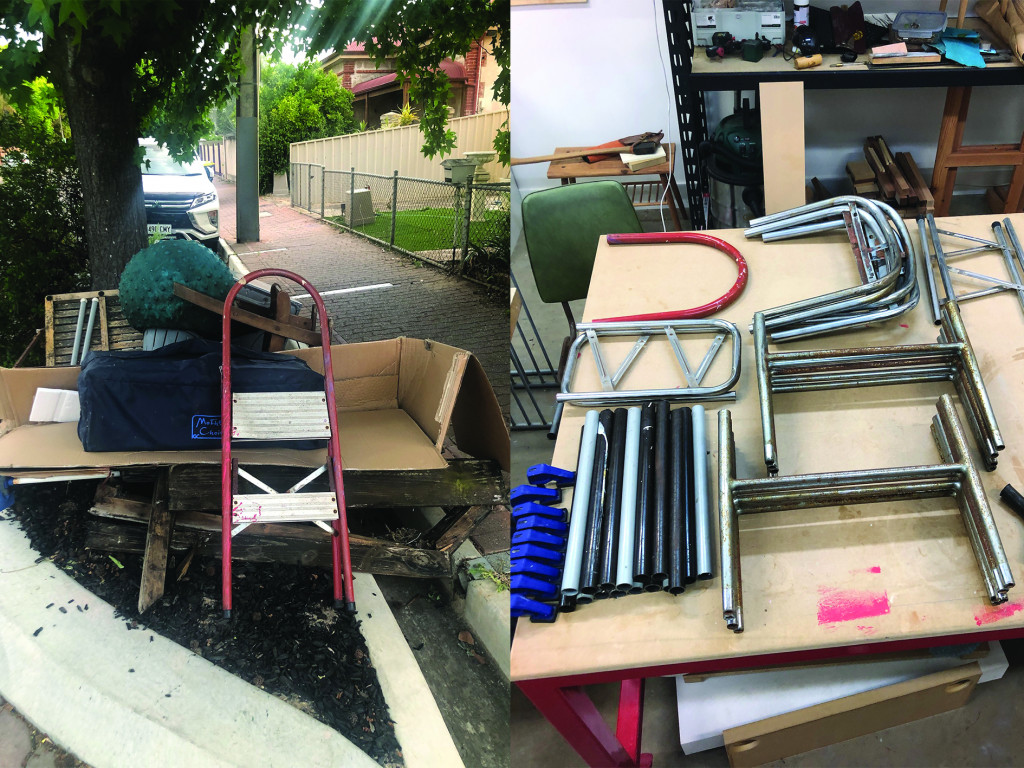Exhibitions of experimentation
Experimentation goes to the core of the exhibition program within Melbourne Design Week (MDW) as designers explore new work without a defined client, budget or scope. This leads to the examination of some big ideas: designers rethink the supply chain, innovate with new materials and imagine possible futures. All of these drivers challenge contemporary lifestyles. The confrontation of how we live today is explored in two exhibitions, Material Culture curated by Marsha Golemac, and HARD curated by Calum Hurley, where designers question the desire for newness in the design process, such as by salvaging used materials and reflecting on traditional manufacturing methods.
Material Culture features the work of 17 designers, makers and artists who have responded to art director Marsha Golemac’s brief to create a piece that explores the value of both old and new to spark conversations about why and how things are made. “We always feel the need to be evolving, which is totally reasonable, but perhaps we can do away with the distinction that one is better than the other when it comes to the idea of old versus new,” says Golemac.

Melbourne-based, Swedish designer Livio Tobler is presenting a new work in this show that unifies the old and the new as a side table. “His work is an examination of the different forms that can be yielded from waste supply and brought back to the showroom floor,” explains Golemac. “Livio mainly works with salvaged timber and stone and one of his main purposes is to reintroduce light to those discarded materials and remind us of the integrity of nature’s resources.”
In HARD the old is also reimagined and celebrated. Curated by Adelaide-based furniture and object maker Calum Hurley, HARD explores the joy that comes from being resourceful with hard rubbish and found objects in the context of high design. Hurley’s concept originally developed from the ‘Australiana tradition’ of collecting hard rubbish but further evolved to explore themes of shame, sexuality and pride. “We all grew up driving kilometers in our parents’ car with them going ‘Quick, grab that’ and I feel like hard rubbish is a part of Australian culture that is old and nostalgic but still happens today with the same enjoyment,” explains Hurley. “From this, the name hard came up straight away and I started looking at the connotations it has as a word in sexuality, partying and being gay in the queer community,” says Hurley. ”There’s a joy in the tongue and cheek element of it but a seriousness in the presentation and commentary behind the work.”

For HARD, Hurley invited South Australian queer designers to create a new work that incorporates hard rubbish or a found element while responding to the themes of the exhibition. “This isn’t grandma’s old chair that’s been painted,” explains Hurley. Instead, the nine pieces on display encompass ceramics, glass, jewellery, an essay, soundscape and more, including a new piece by Hurley named ‘Abutment Coffee Table’. This piece integrates found elements from folding chairs, table frames, shoe racks and a step ladder and brings them together to create a structurally sound object. “This piece pulls references from the support felt within the LGBTQIA+ community, where all members stem from different areas and backgrounds but can ultimately come together in communion,” explains Hurley.

HARD and Material Culture are part of a swag of exhibitions in MDW that demonstrate the moral responsibility and professional capability of designers to shape the future together by shifting beyond a purely commercial approach. The exhibitions throughout MDW are united by this attitude rather than a distinctly Australian aesthetic.
For more information about HARD, go to the exhibition webpage here. For Material Culture, see here.
Latest Posts
20 April 2022
3 March 2022
25 February 2022
22 February 2022
18 February 2022
14 February 2022